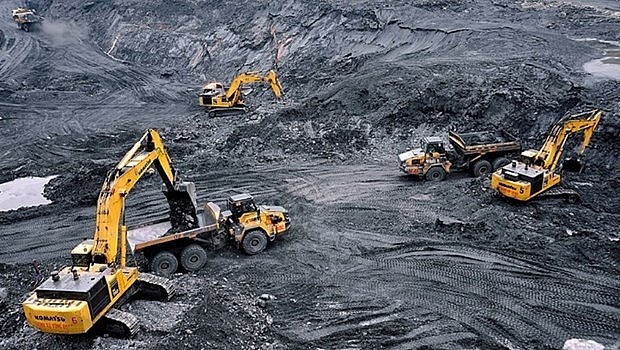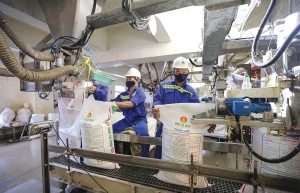FIEs to further explore metal mining
 |
| FIEs to further explore metal mining, photo VNA |
The draft Law on Geology and Minerals, which is set to replace the existing Law on Minerals 2010 (LoM), is scheduled to be submitted to the National Assembly for first comments at its seventh plenary session in May.
Before the amended law is submitted, the Mining Working Group (MWG) of the Vietnam Business Forum is contributing to discussions on reviewing and revising the LoM so that clean and environmentally sustainable mining can be a significant part of Vietnam’s economic growth.
Vietnam is rich in mineral resources, particularly in critical metals such as rare earths, nickel, copper, cobalt, and tungsten. These are all needed by the country’s renewable power and energy industry to help meet Vietnam’s pledges on the reduction of CO2 emissions, and the fast-growing semiconductor chip and digitalisation industries, which Vietnam aspires to be a leader in.
Vietnam’s General Statistics Office reported that in recent years, four Vietnamese-produced commodities that exceeded $10 billion in export value were mainly metallic: mobile phones and spare parts; electronics, computers, and components; machinery, equipment, and spare parts; and vehicles and spare parts.
A MWG report shows that despite such big potential, only a fraction of Vietnam’s valuable metal assets have been discovered to date because of the lack of systematical exploration using modern technologies and methods, such as airborne geophysics and deep penetration technologies to locate more deeply buried deposits.
In addition, illegal mining and local companies using outdated, wasteful, unsafe, and environmentally damaging methods dominate Vietnam’s mining scene.
In view of this, the group said the best way to eliminate environmental damage, apart from enforcing existing regulations, is to encourage foreign-invested enterprises that follow internationally accepted best practices of responsible, sustainable, and efficient mining, environmental protection, and worker safety.
“Currently, working group participants are relatively junior companies but using the world’s best technologies. They are determined to persist and achieve good results in Vietnam as the metals currently being sought or mined by the MWG participants are all essential in the production of electric vehicles and their batteries, wind turbines, solar panels, and digital transformation,” said Bill Howell, chairman of the MWG.
“Having these metals sourced and available in Vietnam, instead of importing them, provides the country with the opportunity to develop downstream high-tech manufacturing industries and establish Vietnam as a dominant regional or even world hub for the manufacture of these products, now highly sought after for a carbon-neutral future,” Howell added. “This is in line with Vietnam’s emphasis on capacity building of manufacturing and supporting industries, and partnership with domestic enterprises where possible.”
MWG members are currently stifled by the apparent lack of coordination and communication among the various Vietnamese ministries and departments involved in exploration and mining, Howell said. It is hoped that bodies like the proposed National Council for Science, Technology, and Innovation and its stated coordination role may help in this regard.
Foreign-invested mining groups have also stated that shortcomings in the LoM itself, as well as excessively high royalties, taxes, and fees compared to other countries, are also significant deterrents to developing an efficient mining industry in Vietnam.
“To draw in quality direct foreign investment in mining, MWG members request the government to benchmark Vietnam’s fiscal regime against peer countries and to provide a fiscal regime competitive with those offered by other jurisdictions. In addition, it is necessary to simplify the current fiscal regime for ease of explanation to investors,” Howell said.
The group hoped that the government and relevant authorities will provide fiscal stability and reduce the frequency of policy changes due to the long lead-time of mining projects, and simultaneously continue improving internal standards and consider recognising and adopting international mineral resource standards, he added.
| Vietnam has some 50 kinds of minerals, and 5,000 operating mines. The mining industry makes up of nearly 5 per cent of the country’s GDP, according to statistics published by the Vietnam Minerals Department under the Ministry of Natural Resources and Environment (MoNRE). The Law on Minerals, promulgated 2010, is considered an important milestone for the state management of minerals. Although the law has contributed to enhancing the effectiveness of the industry, there are still inadequacies. The MoNRE submitted to the government to amend the law in August 2023. The amended 2010 Law on Minerals will be called the Law on Geology and Minerals. The draft law will consist of 13 chapters and 132 articles, creating a synchronous and unified legal corridor, ensuring transparency, overcoming inadequacies to uniformly manage the geological and mineral fields, and strictly managing and effectively using minerals. Highlights of the draft law are the classification of minerals for management, reform of administrative procedures, using the state budget to explore strategic and important minerals, and enhanced management of sand and gravel in riverbeds, lake beds, and sea areas, among others. The draft law is scheduled to be submitted to the National Assembly for first comments at its seventh plenary session in May this year. |
 | New mindsets called for in mining The precipitous decline in the added value of mining may present Vietnamese authorities with a chance to reevaluate mining policies. |
What the stars mean:
★ Poor ★ ★ Promising ★★★ Good ★★★★ Very good ★★★★★ Exceptional
Related Contents
Latest News
More News
- Global partnerships key to Vietnam’s IFC development (December 26, 2025 | 16:18)
- Vingroup pulls out of bid to invest in North-South high-speed railway (December 26, 2025 | 11:42)
- Strengthening supply chains through trade promotions and customs reform (December 24, 2025 | 14:00)
- PM orders investment model for North–South high-speed rail (December 22, 2025 | 17:43)
- LS Eco Energy to invest in Vietnam rare earth sector (December 22, 2025 | 17:31)
- Government moves to establish International Financial Centre (December 21, 2025 | 21:00)
- Vietnam's IFC to target global investment flows (December 21, 2025 | 18:00)
- Two national hospitals expand capacity with new facilities (December 20, 2025 | 09:00)
- Ha Tinh breaks ground on major Vingroup industrial and energy projects (December 19, 2025 | 18:24)
- EVN launches major power infrastructure projects nationwide (December 19, 2025 | 18:17)

 Tag:
Tag:





















 Mobile Version
Mobile Version